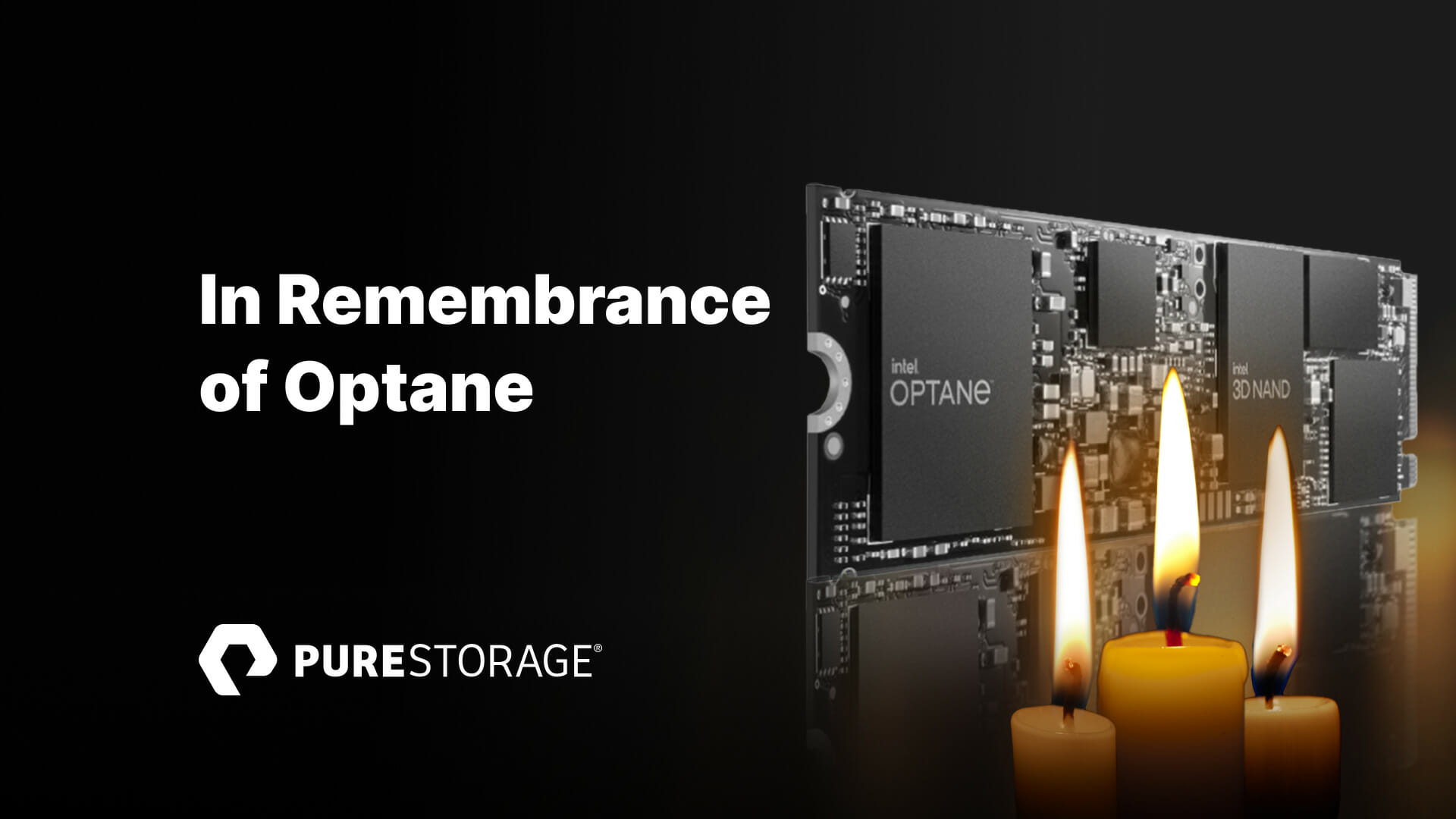Intel Corporation’s announcement last week that it’s winding down the production of its Optane memory business is a sad note for all of us in the storage industry. Optane (and 3D XPoint more broadly) is a unique storage technology, and the end of future product development means that we all will have one less tool in our tool belts to solve interesting problems.
Optane, as a type of phase-change memory (PCM), has properties that today are only replicated by DRAM. In its persistent memory (PMEM) configuration, it was byte-addressable like memory, and in its solid-state disk (SSD) configuration, it was block-addressable like a traditional hard drive. This puts it in contrast to NAND flash: As I discussed in my “Better Science, Volume 1” article, NAND flash has a different scope for reads, writes, and erases at the media level.
Pure Storage recognized the value of Optane in certain workloads when we introduced DirectMemory™ Cache and DirectMemory Modules in our FlashArray//X™ product back in 2019. DirectMemory Cache leverages DirectMemory Modules to improve performance and latency for read-intensive workloads. Pure Storage has a great partnership with Intel and continues to sell and support our DirectMemory products. Today, this remains our only usage of Intel Optane, and so Intel’s recent announcement should have no material impact for Pure.
“It’s a shame. Despite Optane’s more consistent and lower latency, it’s another example of a great technology that lost out to a more economical, mass-market alternative.” -John Colgrove, Founder and CVO at Pure Storage
But as a technologist, seeing a cool technology like 3D XPoint slowly fade away is always painful. While there are plenty of fast storage media options available, 3D XPoint’s unique performance characteristics make it more effective at certain times than its neighbors in the memory hierarchy: DRAM above, and NAND flash below. Optane was the 800-pound gorilla in the storage class memory (SCM) category as a result.
With the end of Optane in sight, the whole category of SCM seems to be under consideration. Some are saying that very fast SLC-based SSDs could count as “SCM,” but then the lines start to become very blurred between what qualifies as SCM and what doesn’t. Our FlashArray//XL™ product can achieve extremely low latencies and very high IOPS; does that make it SCM? Does DRAM backed by a supercapacitor and NAND flash (such as our NVRAM in FlashArray™ and FlashBlade®) count as SCM? All these are open questions.
“3D XPoint is a great technology that didn’t reach commercial viability. If it had been developed before NAND, it might be dominant today. Although there are other technologies with some of its characteristics, would they succeed in the market while 3D XPoint did not?” -Pete Kirkpatrick, VP of Engineering at Pure Storage
Perhaps the future of SCM is less of a category and more of a spectrum, with many different options not being placed in a particular stratum but rather a continuum. But what isn’t up for debate is that Optane is a great technology that, like many other great technologies before it, failed to find a sufficient market to justify continued investment. So long, Optane, and thanks for all the bits.





